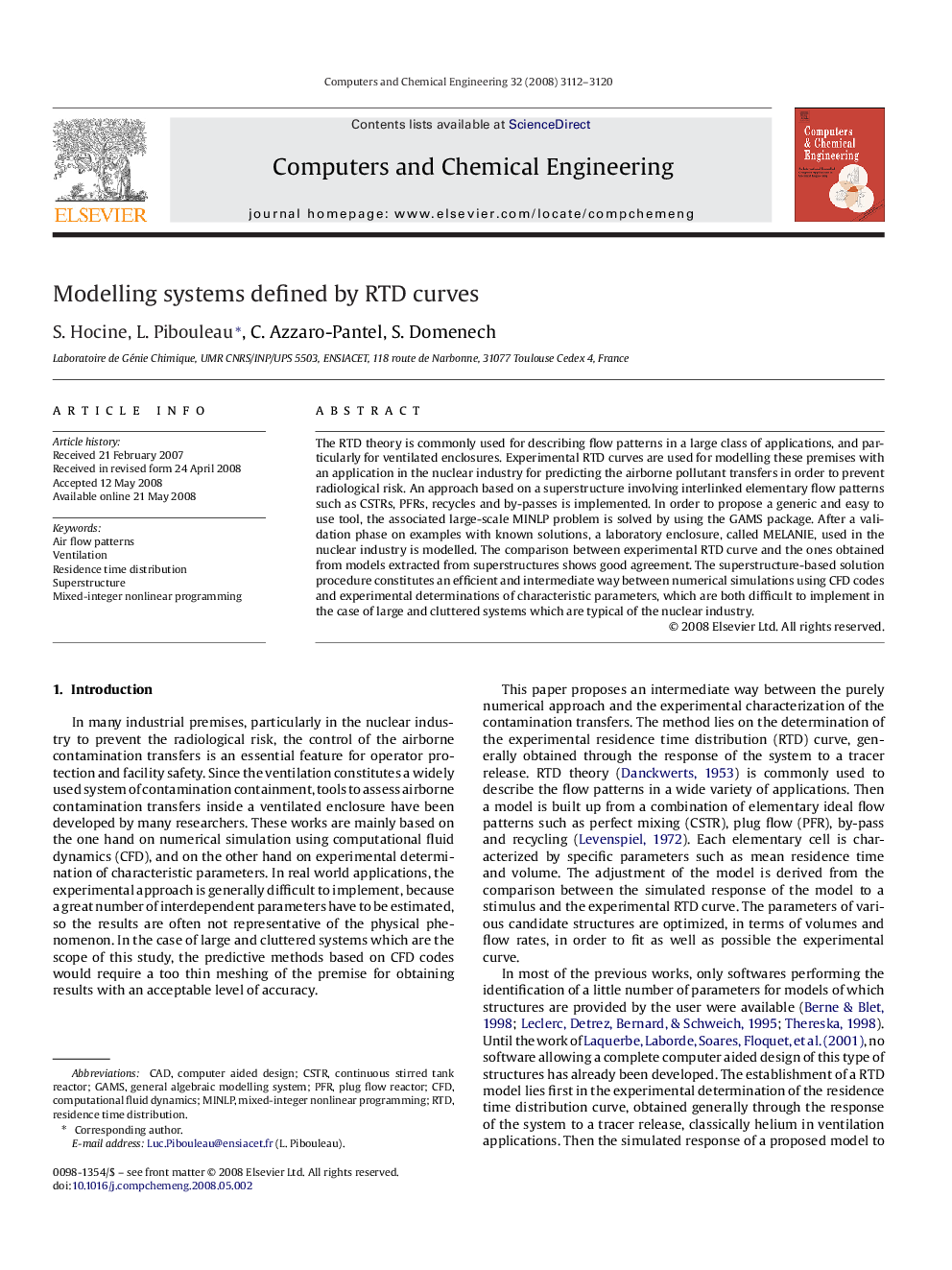| Article ID | Journal | Published Year | Pages | File Type |
|---|---|---|---|---|
| 173529 | Computers & Chemical Engineering | 2008 | 9 Pages |
The RTD theory is commonly used for describing flow patterns in a large class of applications, and particularly for ventilated enclosures. Experimental RTD curves are used for modelling these premises with an application in the nuclear industry for predicting the airborne pollutant transfers in order to prevent radiological risk. An approach based on a superstructure involving interlinked elementary flow patterns such as CSTRs, PFRs, recycles and by-passes is implemented. In order to propose a generic and easy to use tool, the associated large-scale MINLP problem is solved by using the GAMS package. After a validation phase on examples with known solutions, a laboratory enclosure, called MELANIE, used in the nuclear industry is modelled. The comparison between experimental RTD curve and the ones obtained from models extracted from superstructures shows good agreement. The superstructure-based solution procedure constitutes an efficient and intermediate way between numerical simulations using CFD codes and experimental determinations of characteristic parameters, which are both difficult to implement in the case of large and cluttered systems which are typical of the nuclear industry.
